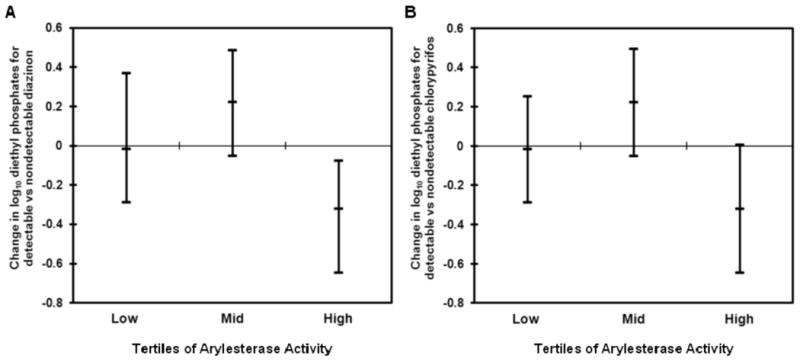Figure 1.

Association of detectable (A) diazinon and (B) chlorpyrifos (non-detect/detect; independent variable) in maternal plasma and log10 diethyl phosphates (dependent variable) and stratified by low, mid, and high arylesterase activity. The change in log10 diethyl phosphates for detectable versus nondetectable plasma organophosphate levels and their 95% confidence intervals are plotted for each tertile of arylesterase activity. We observed positive but nonsignificant associations between diethyl phosphates and diazinon in the first two tertiles of arylesterase. However, in the highest tertile of arylesterase activity, there was a negative association between diethyl phosphates and maternal diazinon in plasma (change in diethyl phosphates (95%CI):-0.36(-0.64,-0.07). Similarly, we found arylesterase significantly modifies the association between diethyl phosphates and diazinon in maternal plasma (change in diethyl phosphates(95%CI):-0.20(-0.35,-0.05)) in the full regression model including the following covariates: maternal diazinon detection frequency, maternal arylesterase (U/mL) activity, and the interaction term. Similarly, for chlorpyrifos, we saw an inverse relationship with diethyl phosphates in the highest tertile of arylesterase (change in diethyl phosphates(95%CI):-0.32(-0.65, 0.01)).
